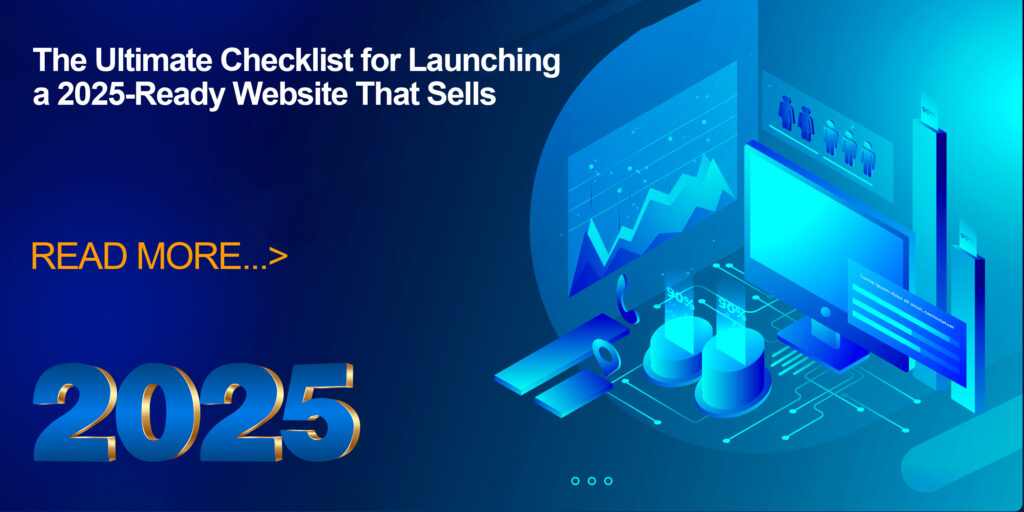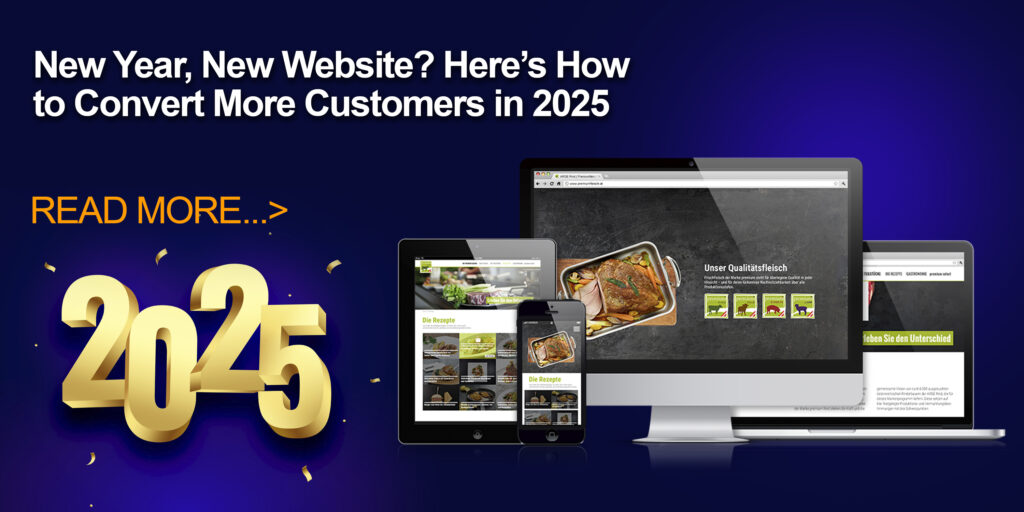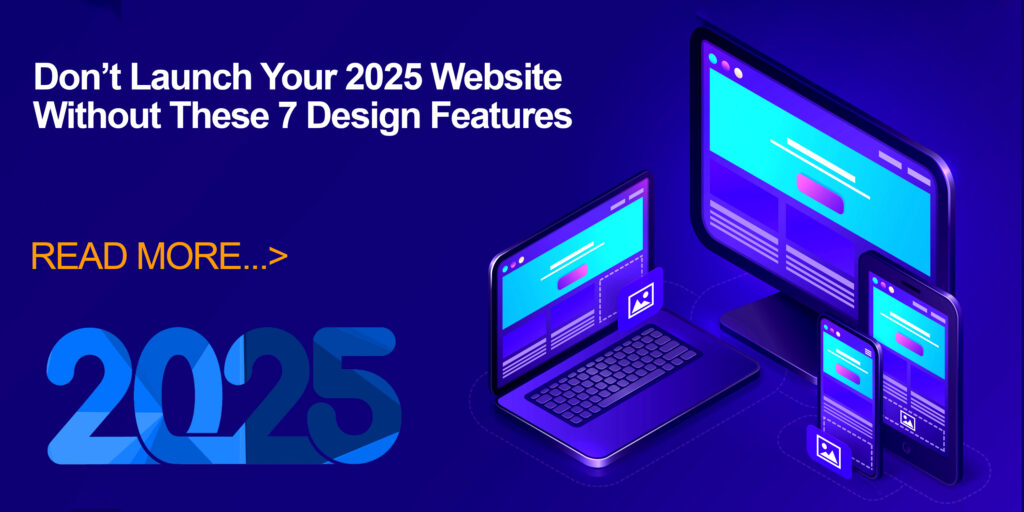The Ultimate Checklist for Launching a 2025-Ready Website That Sells
The Ultimate Checklist for Launching a 2025-Ready Website That Sells In today’s fast-moving digital marketplace, simply having a website isn’t enough. Your site must be strategically optimized, customer-focused, mobile-responsive, and future-proof. Whether you’re launching a brand-new site or revamping an existing one, follow this comprehensive checklist to build a 2025-ready website that converts visitors into loyal customers.
1. Define Your Purpose and Target Audience
Before a single line of code is written, it’s crucial to have a clear purpose and a defined target audience. Ask yourself:
- What product or service are we offering?
- Who are our ideal customers?
- What problem are we solving for them?
Creating detailed buyer personas ensures your content, layout, and calls to action (CTAs) resonate with the people most likely to buy.
2. Choose the Right Domain Name and Hosting
Your domain name should be:
- Easy to remember
- Brandable
- SEO-friendly (include relevant keywords if possible)
For hosting, choose a provider that offers:
- High uptime (99.9%+)
- Fast loading speeds
- Scalability for future growth
- Robust security features
Providers like SiteGround, Bluehost, and WP Engine offer great packages for businesses in 2025.
3. Plan a Conversion-Optimized Website Structure
Create a user-friendly architecture that guides visitors smoothly from landing to conversion. Key tips include:
- Keep the navigation clean and simple
- Use a clear hierarchy of pages
- Include internal linking to reduce bounce rate
- Ensure CTAs are placed above the fold and throughout the content
4. Design for Mobile-First Experience
With over 60% of web traffic coming from mobile devices, a mobile-first design is no longer optional. Your website must:
- Load fast on smartphones
- Display content without the need to zoom
- Have thumb-friendly buttons and navigation
Use responsive frameworks like Bootstrap or Tailwind CSS to ensure seamless responsiveness across all devices.
5. Use a Modern, High-Converting Website Design
Great web design builds trust. Follow these 2025 website design trends:
- Minimalist layouts with plenty of white space
- Micro-animations and interactive features
- Bold typography and scroll-triggered effects
- Personalized user experiences through dynamic content
Invest in professional visuals and avoid stocky, overused images. A high-quality visual identity increases conversion.
6. Create High-Quality, SEO-Optimized Content
Content is king — but only if it’s done right. Create content that is:
- Keyword-rich, using long-tail and LSI (Latent Semantic Indexing) keywords
- Written for humans first, then search engines
- Structured with clear headings (H1, H2, H3…)
- Enhanced with images, infographics, and videos
Make sure your content answers search intent, provides value, and encourages action. Update your blog regularly with relevant industry topics.
7. Implement Strong Technical SEO
Behind the scenes, technical SEO is vital for visibility. Ensure:
- Fast page load speeds (under 3 seconds)
- Clean URL structures
- Schema markup for rich snippets
- XML sitemaps and robot.txt file are in place
- Canonical tags to prevent duplicate content
- HTTPS (SSL certificate installed)
Use tools like Google Search Console and Screaming Frog to audit your site before launch.
8. Integrate Essential Website Tools and Features
To turn your site into a conversion machine, integrate:
- Live chat or chatbot for instant communication
- Email sign-up forms for lead generation
- Social media links for engagement
- E-commerce functionality (if applicable)
- Analytics tools like Google Analytics 4
- CRM integration to track leads and customer behavior
Don’t forget to include privacy policies, terms of use, and cookie banners for GDPR compliance.
9. Test Thoroughly Before Launch
Testing is not optional. Check for:
- Broken links and 404 errors
- Mobile and cross-browser compatibility
- Functional forms and CTAs
- Page load speeds
- Correct tracking code implementations
Use tools like BrowserStack, GTmetrix, and PageSpeed Insights to spot issues before going live.
10. Launch and Promote Your Website Strategically
Don’t just hit “Publish” and wait. Announce your website launch via:
- Social media campaigns
- Email marketing blasts
- Guest posts and backlink outreach
- Paid ads (Google Ads, Meta, etc.)
Leverage your existing audience and incentivize visits with a limited-time offer or free resource.
11. Monitor, Analyze, and Optimize Continuously
Once your site is live, the real work begins. Track key metrics:
- Bounce rate
- Conversion rate
- Average time on page
- Traffic sources
- Top-performing content
Make data-driven changes regularly based on performance. A/B test headlines, images, and CTAs to maximize effectiveness.
12. Stay Updated with Future Trends
2025 will demand websites to:
- Leverage AI for personalization
- Integrate voice search optimization
- Support dark mode designs
- Focus on core web vitals and Google’s evolving algorithms
Continue learning, adapting, and refining to ensure long-term visibility and ROI The Ultimate Checklist for Launching a 2025.
Final Thoughts
Launching a successful 2025-ready website isn’t about checking a few boxes. It’s about creating a fluid, performance-driven digital experience tailored for your customers and aligned with search engine best practices. Use this checklist as your blueprint for online success.
If you want to read more information about how to boost traffic on your Website just visit → The Insider’s Views.



